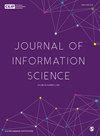Empowering the middle management: Incorporating data summarisation and visualisation techniques in management information systems
IF 1.7
4区 管理学
Q3 COMPUTER SCIENCE, INFORMATION SYSTEMS
引用次数: 0
Abstract
Human–computer interaction (HCI) researchers and practitioners have explored how computers and software can aid users in decision-making. Accurate information is crucial in decision-making; therefore, when designing a management information system (MIS), it is necessary to understand the information needs of the end-users and to incorporate this understanding in a way which allows the users to obtain an accurate and intuitive snapshot of the data. Although most of the day-to-day decisions in various organisations are made by middle management employees (as opposed to executives and senior managers), previous literature has scarcely examined how middle management employees’ decision-making process can be improved through the use of MIS. In this study, we examine the impact of different data summarisation and visualisation layouts on different aspects of the decision-making process taking into consideration the decision-makers’ personal characteristics, and propose to include the results of this examination in the MIS design. To this end, we recruited participants from a crowdsourcing platform. Participants were required to complete a task which simulates middle management employees’ day-to-day operational decision-making scenario. To better understand the effects of participants’ personal characteristics and their visual abilities, participants were asked to answer a personality questionnaire and a questionnaire testing for visual abilities. The results indicate that when looking at the population as a single group, the effect of the data summarisation and visualisation layouts on the decision-making process cannot be discerned. However, when taking into consideration additional user characteristics, the results indicate that the data summarisation and visualisation layouts affect the decisions made.赋予中层管理者权力:将数据汇总和可视化技术纳入管理信息系统
人机交互(HCI)研究人员和从业者已经探索了计算机和软件如何帮助用户进行决策。准确的信息对决策至关重要;因此,在设计管理信息系统(MIS)时,有必要了解最终用户的信息需求,并以允许用户获得准确直观的数据快照的方式结合这种理解。尽管各种组织中的大多数日常决策都是由中层管理人员(而不是高管和高级管理人员)做出的,但以前的文献很少研究如何通过使用MIS来改善中层管理人员的决策过程。在这项研究中,考虑到决策者的个人特征,我们考察了不同的数据汇总和可视化布局对决策过程不同方面的影响,并建议将这一考察结果纳入MIS设计中。为此,我们从众包平台招募了参与者。参与者被要求完成一项模拟中层管理人员日常运营决策场景的任务。为了更好地了解参与者的个人特征和视觉能力的影响,参与者被要求回答个性问卷和视觉能力测试问卷。结果表明,当将人口视为一个单一群体时,无法辨别数据汇总和可视化布局对决策过程的影响。然而,当考虑到其他用户特征时,结果表明数据汇总和可视化布局会影响决策。
本文章由计算机程序翻译,如有差异,请以英文原文为准。
求助全文
约1分钟内获得全文
求助全文
来源期刊

Journal of Information Science
工程技术-计算机:信息系统
CiteScore
6.80
自引率
8.30%
发文量
121
审稿时长
4 months
期刊介绍:
The Journal of Information Science is a peer-reviewed international journal of high repute covering topics of interest to all those researching and working in the sciences of information and knowledge management. The Editors welcome material on any aspect of information science theory, policy, application or practice that will advance thinking in the field.
 求助内容:
求助内容: 应助结果提醒方式:
应助结果提醒方式:


